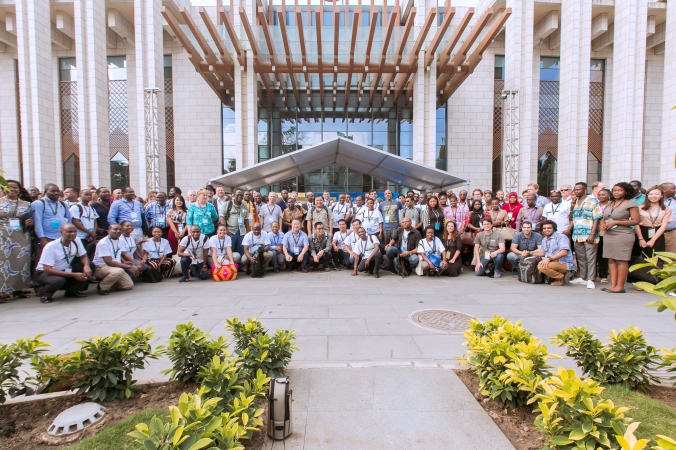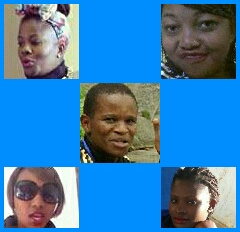*Query*
SELECT admin_level,name, way
FROM planet_osm_polygon
WHERE admin_level is not null
*results*
| admin_level |
name |
| 5 |
“Mokhotlong District” |
| 2 |
“South Africa” |
| 2 |
“Lesotho” |
| 5 |
“Mafeteng District” |
| 5 |
“Mohale’s Hoek” |
| 5 |
“Maseru District” |
| 5 |
“Berea District” |
| 5 |
“Quthing District” |
| 5 |
“Leribe District” |
| 10 |
“Setsoto Ward 14” |
| 10 |
“setsoto Ward 12” |
| 5 |
“Thaba_Tseka District” |
| 5 |
“Butha-Buthe District” |
| 5 |
“Qacha’s Nek District” |
Next will be how to extract a district from the entire planet_osm
*Query*
Qacha’s Nek Quthing
CREATE TABLE qacha_district AS CREATE TABLE quthing_district AS
SELECT admin_level, name SELECT admin_level, name
FROM planet_osm_polygon FROM planet_osm_polygon
WHERE admin_level = ‘5’ WHERE admin_level = ‘5’
AND name = ‘Qacha’’s Nek District AND name = ‘Quthing District
Then in the next queries, we want to get the geometries that are only within two districts of choice (Quthing and Qacha’s Nek), so I had to use the ST_Intersects function. this will intersect my two specific districts with the rest of the planet geometries, namely; points, lines and polygons.
I was awe struck as I waited while the queries ran, for example, for qacha_lines table, it resulted in 32965 rows and took 3409067ms overall to load the results. This is an example of a map with content.
NB: there are numerous different ways around querying this.
*Queries*
Qacha’s Nek Quthing
points
CREATE TABLE qacha_points AS ( CREATE TABLE quthing_points AS (
SELECT * SELECT *
FROM planet_osm_point as qp FROM planet_osm_point as qp
WHERE ST_Intersects(qp.way, ( WHERE ST_Intersects(qp.way, (
SELECT way SELECT way
FROM planet_osm_polygon FROM planet_osm_polygon
WHERE admin_level = ‘5’ AND WHERE admin_level = ‘5’ AND
name = ‘Qacha’’s Nek District’))) name = ‘Quthing District’)))
lines
CREATE TABLE qacha_lines AS ( CREATE TABLE quthing_lines AS
SELECT * SELECT *
FROM planet_osm_line as ln FROM planet_osm_line as qn
WHERE ST_Intersects (ln.way, ( WHERE ST_Intersects(qn.way, (
SELECT way SELECT way
FROM planet_osm_polygon FROM planet_osm_polygon
WHERE admin_level = ‘5’ WHERE admin_level = ‘5’
AND name = ‘Qacha’’s Nek District’))) AND name = ‘Quthing District’
You can do the same thing for polygons, you will just have to substitute the words line or point with polygon.
Now the next step is to create tables that count many things that are mapped in your districts as they are tagged, could be buildings, roads, rivers e.t.c as follows:
*Query*
SELECT highway, count(*) SELECT highway, Count(*)
FROM qacha_lines FROM quthing_lines
WHERE highway is not null WHERE highway is not null
GROUP BY highway GROUP BY highway
*Results*
QACHA QUTHING
| Highway |
Count |
highway |
count |
| Primary |
34 |
primary |
23 |
| unclassified |
167 |
secondary |
13 |
| secondary |
36 |
unclassified |
348 |
| track |
646 |
track |
780 |
| footway |
458 |
footway |
13 |
| service |
13 |
service |
12 |
| path |
1520 |
path |
2694 |
| tertiary |
47 |
tertiary |
56 |
| residential |
703 |
residential |
1139 |
| road |
6 |
|
|
| bridleway |
1 |
|
|
*Query*
SELECT waterway, count(*) SELECT waterway, count(*)
FROM qacha_lines FROM quthing_lines
WHERE waterway is not null WHERE waterway is not null
GROUP BY waterway GROUP BY waterway
*Results*
QACHA QUTHING
| Waterway |
Count |
waterway |
count |
| Drain |
20 |
drain |
110 |
| Weir |
3 |
weir |
3 |
| River |
141 |
river |
149 |
| Stream |
14367 |
dam |
1 |
*Query*
SELECT landuse, count(*) SELECT landuse, count(*)
FROM qacha_polygon FROM quthing_polygon
WHERE landuse is not null WHERE landuse is not null
GROUP BY landuse GROUP BY landuse
*Results*
QACHA QUTHING
| Landuse |
Count |
landuse |
count |
| Cemetery |
12 |
cemetery |
82 |
| Meadow |
1 |
recreation_ground |
1 |
| Farmland |
4184 |
farm |
1 |
| Farmyard |
24 |
farmland |
7760 |
| Military |
1 |
farmyard |
258 |
| residential |
700 |
military |
1 |
| Orchard |
3 |
residential |
1935 |
| Forest |
24 |
orchard |
1 |
| Industrial |
3 |
forest |
154 |
| Quarry |
9 |
Quarry |
42 |
| plant_nursery |
2 |
Industrial |
1 |
| commercial |
9 |
Commercial |
13 |
| Landfill |
1 |
Grass |
6 |
| Retail |
1 |
Garages |
1 |
| health centre |
1 |
|
|
*Query*
SELECT building, count(*) SELECT building, count (*)
FROM qacha_polygon FROM quthing_polygon
WHERE building is not null WHERE building is not null
GROUP BY building GROUP BY building
*Results*
QACHA QUTHING
| Building |
count |
building |
count |
| House |
38 |
house| |
64 |
| Church |
4 |
Church |
13 |
| Ruins |
104 |
farm |
4 |
| Hangar |
1 |
ruins |
290 |
| Hospital |
4 |
Kraal |
2 |
| Apartments |
2 |
Industrial |
3 |
| Industrial |
7 |
Commercial |
130 |
| Commercial |
14 |
Clinic |
1 |
| Ruin |
7 |
Office |
40 |
| Office |
4 |
Yez |
1 |
| Civic |
1 |
Wall |
5 |
| School |
15 |
School |
25 |
| Shed |
84 |
Terrace |
1 |
| Farm houses |
2 |
Shed |
11 |
| Garage |
2 |
Service |
2 |
| Wall |
5 |
Hu |
1 |
| Residential |
10 |
Garage |
1 |
| Wal |
333 |
Residential |
8 |
| Cabin |
3 |
Building |
1 |
| Yes |
20431 |
Yes |
34269 |
| Construction |
1349 |
Construction |
3460 |
| Retail |
1 |
Retail |
38 |
| Hotel |
11 |
Hotel |
3 |
| Hut |
17910 |
Hut |
24813 |
| Garages |
1 |
Barn |
2 |
| Ruind |
1 |
Woolshed |
1 |
After running and checking them analysis, especially for Qacha’s Nek because I definitely would know anything about Quthing. Our data is still not accurately tagged. For instance some of the buildings are tagged as yez instead of yes, wal instead of wall or ruind instead of ruins, more over some of the numbers do not match what is observeable of the area or on ground. For example, Qacha’s Nek does not have any industrial buildings but in the tabulated results our Industrial buildings = 7.
this is open for everyone to comment though!
the data used was that of the 28th december 2016, downloaded from download.geofabrik.de. this was loaded into pgadmin using the following command line:
cd C:\Program Files\osm
-c -d lesotho -K -H localhost -U postgres -P 5432 –slim -S default.style 2812-lesotho-latest.osm.pbf
















 showed great team work and extended much dedication which lead towards the successful completion of this task. Not leaving behind MontshyQn who has claimed a leadership position by throwing in the 28% contribution.—> way to girl, keep up the good work.<—
showed great team work and extended much dedication which lead towards the successful completion of this task. Not leaving behind MontshyQn who has claimed a leadership position by throwing in the 28% contribution.—> way to girl, keep up the good work.<—




